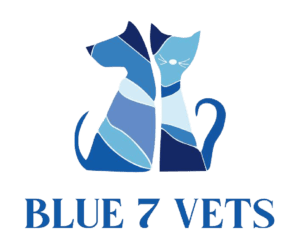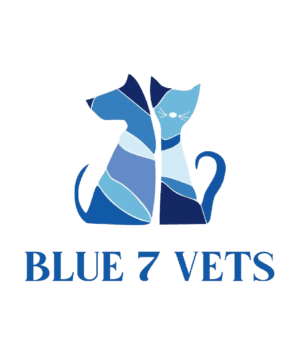Facilities
Nurturing Healthy Pets
State-of-the-art facilities are designed to provide the best care to your furry companions at Blue7vets. From advanced diagnostics to cozy recovery spaces, every element is crafted with your pet’s comfort and health in mind.
Cardiac Care
Dentistry
Endoscopy Unit
Neurology
Orthopedic / Truma Care
Physiotherapy




Overview
Cardiac Facilities for Pets
We at BLUE 7 VETS provide comprehensive cardiac care facilities to address the unique cardiovascular needs of our furry companions. Cardiac care for pets includes preventive measures aimed at maintaining heart health and detecting potential issues early on. Regular wellness check-ups, including heart auscultation (listening to heart sounds), monitoring blood pressure and evaluating heart rate and rhythm, help identify any abnormalities or signs of cardiac disease. Additionally, maintaining a balanced diet, appropriate exercise, and managing weight are important preventive measures to promote a healthy heart. Cardiac care becomes crucial when pets exhibit signs of cardiac disease or are at a higher risk due to factors such as breed predispositions, age or underlying health conditions. Identifying and managing cardiac issues early can improve the prognosis and enhance the quality and duration of a pet’s life.
Echocardiography
Cardiac Medications
Cardiac Rehabilitation.
Blood Pressure Monitoring
Electrocardiography (ECG)
Ongoing Monitoring and Follow-up
Clinic Service Advanced Cardiac Diagnostics
Our Clinic utilizes advanced technologies for cardiac evaluations. These may include:
- Electrocardiography (ECG) for identifying abnormalities in the heart’s electrical conduction system
- Cardiac Catheterization allows for direct visualization of blood vessels and pressure measurements within the heart
- Echocardiography helps diagnose conditions such as heart murmurs, congenital defects or heart muscle diseases
- Holter Monitoring helps to identify and analyze abnormal heart rhythms that may not be captured during a regular veterinary examination
- Radiography provides valuable information about the size and shape of the heart, lung congestion and potential signs of heart disease
- Blood Tests such as NT-proBNP or cardiac troponin levels are conducted to assess cardiac function, detect inflammation or evaluate the severity of heart disease


Overview
Maintaining proper dental care is essential for the health and well-being of our furry friends. A dedicated dentistry facility for pet animals offers specialized services to address their unique oral health needs. Pet dentistry is vital for several reasons. Dental issues, such as periodontal disease, tooth decay, and oral infections, can cause pain, discomfort, and lead to more severe health problems. Regular dental care helps prevent these issues, promotes oral hygiene, and safeguards overall health.
Pet dentistry at BLUE 7 VETS involves a comprehensive range of services, including dental examinations, cleanings and treatments. The procedure typically begins with a thorough oral examination to assess the overall oral health and identify any existing issues. Dental cleanings involve the removal of plaque, tartar, and bacteria from the teeth and gums using specialized tools. In some cases, extractions, oral surgeries, or treatments for dental conditions may be necessary to address specific problems.
To ensure the safety and comfort of the animals during dental procedures, anesthesia is commonly used. Anesthesia allows veterinarians to perform a thorough examination, cleanings and treatments without causing distress or discomfort to the pet. The anesthesia process is carefully monitored by trained professionals to minimize risks.
Modern dentistry facilities at BLUE 7 VETS for pets utilize advanced techniques and equipment such as digital dental radiography, which provides detailed images of the teeth and underlying structures for accurate diagnoses.
Pet dentistry offers numerous benefits:
Pain Relief
Extended Lifespan
Improved Oral Health
Prevention of Systemic Health Problems
Eliminate bad breath caused by dental problems



Overview
The endoscopy facility at our veterinary clinic BLUE 7 VETS offers advanced minimally invasive procedures for diagnostic and surgical purposes. The endoscopy department, led by skilled veterinarians and supported by a trained team, offers advanced diagnostic capabilities and therapeutic interventions. By utilizing minimally invasive techniques, it aims to provide accurate diagnoses, effective treatments and improved outcomes for pets with a wide range of gastrointestinal, respiratorynand urinary tract conditions.
The endoscopy encompasses a range of diseases and conditions, including but not limited to:
- Gastrointestinal endoscopy (upper and lower) to visualize the esophagus, stomach, and intestines
- Respiratory endoscopy (bronchoscopy) to examine the airways and collect samples
- Urinary tract endoscopy (cystoscopy) to assess the bladder and urethra
- Biopsy and cytology sample collection for further analysis
- Foreign body removal from the gastrointestinal or respiratory tract
- Placement of feeding tubes or stents to address obstructions or strictures
Endoscopy offers several advantages, including :
Minimally invasive
It requires small incisions or natural body openings, reducing trauma and promoting quicker recovery.
Accurate diagnosis
Direct visualization allows for precise examination and targeted sample collection.
Reduced risks
Minimizes the risk of complications associated with traditional open surgeries.
Less pain and discomfort
Smaller incisions lead to less post-operative pain and discomfort.
Shorter hospitalization
Most endoscopic procedures are performed on an outpatient basis, minimizing hospital stays.


Overview
The laparoscopic facility at BLUE 7 VETS veterinary clinic is dedicated to providing cutting-edge minimally invasive procedures for both diagnostic and surgical purposes in pets. Laparoscopic surgeries involve using small incisions and specialized instruments to access the interior of the body, minimizing trauma and promoting quicker recovery times for your beloved animals.
Here's an overview of the laparoscopic surgeries offered at BLUE 7 VETS:
Diagnostic Procedures:
Diagnostic Procedures
Laparoscopic Biopsy
Small tissue samples can be obtained from internal organs for accurate diagnosis without the need for large incisions.
Exploratory Laparoscopy
Visual examination of the abdominal cavity to identify any abnormalities, such as tumors or adhesions.
Diagnostic Procedures:
Spaying (Ovariohysterectomy)
Minimally invasive removal of the ovaries and uterus in female pets to prevent unwanted pregnancies and certain health issues.
Neutering (Castration)
Removal of the testicles in male pets to control reproduction and manage certain behavioral and health problems.
Gastrointestinal Surgeries
Procedures involving the stomach, intestines, and other digestive organs can be performed with reduced trauma and faster recovery.
Liver and Spleen Surgeries
Removal of tumors, cysts, or diseased portions of these organs while minimizing tissue disruption.
Cryptorchidism Surgery
Correction of retained testicles that haven't descended properly into the scrotum.
Laparoscopic-Assisted Cystotomy
Precise removal of bladder stones through small incisions, reducing the risk of complications.
Adrenalectomy
Removal of adrenal gland tumors while minimizing impact on surrounding tissues.
Benefits :
Minimized Trauma: Smaller incisions result in less pain, reduced bleeding, and lower risk of infection.
Faster Recovery: Pets can return to their normal activities sooner compared to traditional open surgeries.
Less Pain: Reduced tissue trauma means less post-operative pain for your pet.
Improved Visualization: High-definition cameras provide excellent views of the surgical site, allowing for precise procedures.
Reduced Scarring: Small incisions result in minimal scarring, promoting better cosmetic outcomes.
Advanced Technology :
BLUE 7 VETS utilizes state-of-the-art laparoscopic equipment, including high-definition cameras and specialized instruments designed for veterinary procedures.
Our experienced veterinary surgeons are skilled in performing laparoscopic surgeries on pets, ensuring the best possible care for your furry companions.


Overview
Orthopedic treatment is a specialized branch of veterinary medicine that focuses on the diagnosis, treatment and management of musculoskeletal conditions in pets. Orthopedic treatment in pets involves a multidisciplinary approach, including thorough diagnostics, medical management, physical rehabilitation and surgical interventions. The specific treatment plan depends on the underlying condition, severity of the problem and the individual needs of the pet.
The primary goal of orthopedic treatment is to alleviate pain, restore normal function, and enhance the pet’s mobility and quality of life. Veterinary orthopedic specialists work closely with pet owners to develop comprehensive treatment strategies tailored to each animal’s unique circumstances, aiming for optimal outcomes and long-term well-being.
Here's when orthopedic treatment is required :
Injury and Trauma
Orthopedic treatment is necessary in cases of fractures, dislocations, ligament tears (such as cruciate ligament rupture), muscle/tendon injuries, and joint trauma. These injuries may result from accidents, falls, or athletic activities.
Congenital or Developmental Disorders
Some pets are born with or develop musculoskeletal disorders such as hip dysplasia, elbow dysplasia, patellar luxation or spinal malformations. Orthopedic treatment manages and alleviate pain or mobility issues.
Degenerative Joint Diseases
Conditions like osteoarthritis and degenerative disc disease can cause chronic pain, stiffness and reduced mobility in pets. Orthopedic treatments such as joint supplements, medications, physical therapy and surgical interventions help improve comfort.
Joint Instability and Luxations
Pets may experience joint instability such as frequent patellar luxations or hip joint subluxations. Orthopedic procedures like corrective surgeries or joint stabilization techniques can restore joint function and prevent recurrent dislocations.
Bone and Joint Tumors
Orthopedic treatment is crucial in managing bone and joint tumors in pets. Surgical interventions including tumor removal and limb-sparing procedures eradicates or control the tumor while preserving limb function.
Corrective Procedures for Congenital Deformities
Some pets are born with deformities that affect their ability to move and live comfortably. Orthopedic surgeries such as angular limb deformity correction or joint realignment procedures are performed to improve the pet's overall quality of life.


Overview
Physiotherapy, or physical therapy, for pet animals plays a vital role in improving their mobility, function, and overall well-being. Pet physiotherapy encompasses a range of treatments tailored to address specific conditions and promote optimal physical health.
Physiotherapy Treament includes :
- Use of Specialized equipment such as balance boards or treadmills.
- Hydrotherapy (water-based exercises)
- Therapeutic exercises
- Manual therapies
- Electrotherapy
- Massage
Pet physiotherapy is recommended in following cases :
Post-surgical recovery
Musculoskeletal injuries
Neurological disorders
Chronic pain management
Obesity-related mobility issues
Advantages :
- Preventative Care
- Personalized Approach
- Enhanced Mobility and Function through targeted exercises and therapies.
- Post-surgical or injury rehabilitation can be expedited with physiotherapy.
- Pain Management by reducing inflammation, improving joint mobility and strengthening supporting muscles.
- Improved Quality of Life as it enhances the overall quality of life for pets.
Cardiac Care
Dentistry
Endoscopy Unit
Neurology
Orthopedic / Truma Care
Physiotherapy




Overview
Cardiac Facilities for Pets
We at BLUE 7 VETS provide comprehensive cardiac care facilities to address the unique cardiovascular needs of our furry companions. Cardiac care for pets includes preventive measures aimed at maintaining heart health and detecting potential issues early on. Regular wellness check-ups, including heart auscultation (listening to heart sounds), monitoring blood pressure and evaluating heart rate and rhythm, help identify any abnormalities or signs of cardiac disease. Additionally, maintaining a balanced diet, appropriate exercise, and managing weight are important preventive measures to promote a healthy heart. Cardiac care becomes crucial when pets exhibit signs of cardiac disease or are at a higher risk due to factors such as breed predispositions, age or underlying health conditions. Identifying and managing cardiac issues early can improve the prognosis and enhance the quality and duration of a pet’s life.
Echocardiography
Cardiac Medications
Cardiac Rehabilitation.
Blood Pressure Monitoring
Electrocardiography (ECG)
Ongoing Monitoring and Follow-up
Clinic Service Advanced Cardiac Diagnostics
Our Clinic utilizes advanced technologies for cardiac evaluations. These may include:
- Electrocardiography (ECG) for identifying abnormalities in the heart’s electrical conduction system
- Cardiac Catheterization allows for direct visualization of blood vessels and pressure measurements within the heart
- Echocardiography helps diagnose conditions such as heart murmurs, congenital defects or heart muscle diseases
- Holter Monitoring helps to identify and analyze abnormal heart rhythms that may not be captured during a regular veterinary examination
- Radiography provides valuable information about the size and shape of the heart, lung congestion and potential signs of heart disease
- Blood Tests such as NT-proBNP or cardiac troponin levels are conducted to assess cardiac function, detect inflammation or evaluate the severity of heart disease


Overview
Maintaining proper dental care is essential for the health and well-being of our furry friends. A dedicated dentistry facility for pet animals offers specialized services to address their unique oral health needs. Pet dentistry is vital for several reasons. Dental issues, such as periodontal disease, tooth decay, and oral infections, can cause pain, discomfort, and lead to more severe health problems. Regular dental care helps prevent these issues, promotes oral hygiene, and safeguards overall health.
Pet dentistry at BLUE 7 VETS involves a comprehensive range of services, including dental examinations, cleanings and treatments. The procedure typically begins with a thorough oral examination to assess the overall oral health and identify any existing issues. Dental cleanings involve the removal of plaque, tartar, and bacteria from the teeth and gums using specialized tools. In some cases, extractions, oral surgeries, or treatments for dental conditions may be necessary to address specific problems.
To ensure the safety and comfort of the animals during dental procedures, anesthesia is commonly used. Anesthesia allows veterinarians to perform a thorough examination, cleanings and treatments without causing distress or discomfort to the pet. The anesthesia process is carefully monitored by trained professionals to minimize risks.
Modern dentistry facilities at BLUE 7 VETS for pets utilize advanced techniques and equipment such as digital dental radiography, which provides detailed images of the teeth and underlying structures for accurate diagnoses.
Pet dentistry offers numerous benefits:
Pain Relief
Extended Lifespan
Improved Oral Health
Prevention of Systemic Health Problems
Eliminate bad breath caused by dental problems



Overview
The endoscopy facility at our veterinary clinic BLUE 7 VETS offers advanced minimally invasive procedures for diagnostic and surgical purposes. The endoscopy department, led by skilled veterinarians and supported by a trained team, offers advanced diagnostic capabilities and therapeutic interventions. By utilizing minimally invasive techniques, it aims to provide accurate diagnoses, effective treatments and improved outcomes for pets with a wide range of gastrointestinal, respiratorynand urinary tract conditions.
The endoscopy encompasses a range of diseases and conditions, including but not limited to:
- Gastrointestinal endoscopy (upper and lower) to visualize the esophagus, stomach, and intestines
- Respiratory endoscopy (bronchoscopy) to examine the airways and collect samples
- Urinary tract endoscopy (cystoscopy) to assess the bladder and urethra
- Biopsy and cytology sample collection for further analysis
- Foreign body removal from the gastrointestinal or respiratory tract
- Placement of feeding tubes or stents to address obstructions or strictures
Endoscopy offers several advantages, including :
Minimally invasive
It requires small incisions or natural body openings, reducing trauma and promoting quicker recovery.
Accurate diagnosis
Direct visualization allows for precise examination and targeted sample collection.
Reduced risks
Minimizes the risk of complications associated with traditional open surgeries.
Less pain and discomfort
Smaller incisions lead to less post-operative pain and discomfort.
Shorter hospitalization
Most endoscopic procedures are performed on an outpatient basis, minimizing hospital stays.


Overview
The laparoscopic facility at BLUE 7 VETS veterinary clinic is dedicated to providing cutting-edge minimally invasive procedures for both diagnostic and surgical purposes in pets. Laparoscopic surgeries involve using small incisions and specialized instruments to access the interior of the body, minimizing trauma and promoting quicker recovery times for your beloved animals.
Here's an overview of the laparoscopic surgeries offered at BLUE 7 VETS:
Diagnostic Procedures:
Diagnostic Procedures
Laparoscopic Biopsy
Small tissue samples can be obtained from internal organs for accurate diagnosis without the need for large incisions.
Exploratory Laparoscopy
Visual examination of the abdominal cavity to identify any abnormalities, such as tumors or adhesions.
Diagnostic Procedures:
Spaying (Ovariohysterectomy)
Minimally invasive removal of the ovaries and uterus in female pets to prevent unwanted pregnancies and certain health issues.
Neutering (Castration)
Removal of the testicles in male pets to control reproduction and manage certain behavioral and health problems.
Gastrointestinal Surgeries
Procedures involving the stomach, intestines, and other digestive organs can be performed with reduced trauma and faster recovery.
Liver and Spleen Surgeries
Removal of tumors, cysts, or diseased portions of these organs while minimizing tissue disruption.
Cryptorchidism Surgery
Correction of retained testicles that haven't descended properly into the scrotum.
Laparoscopic-Assisted Cystotomy
Precise removal of bladder stones through small incisions, reducing the risk of complications.
Adrenalectomy
Removal of adrenal gland tumors while minimizing impact on surrounding tissues.
Benefits :
Minimized Trauma: Smaller incisions result in less pain, reduced bleeding, and lower risk of infection.
Faster Recovery: Pets can return to their normal activities sooner compared to traditional open surgeries.
Less Pain: Reduced tissue trauma means less post-operative pain for your pet.
Improved Visualization: High-definition cameras provide excellent views of the surgical site, allowing for precise procedures.
Reduced Scarring: Small incisions result in minimal scarring, promoting better cosmetic outcomes.
Advanced Technology :
BLUE 7 VETS utilizes state-of-the-art laparoscopic equipment, including high-definition cameras and specialized instruments designed for veterinary procedures.
Our experienced veterinary surgeons are skilled in performing laparoscopic surgeries on pets, ensuring the best possible care for your furry companions.


Overview
Orthopedic treatment is a specialized branch of veterinary medicine that focuses on the diagnosis, treatment and management of musculoskeletal conditions in pets. Orthopedic treatment in pets involves a multidisciplinary approach, including thorough diagnostics, medical management, physical rehabilitation and surgical interventions. The specific treatment plan depends on the underlying condition, severity of the problem and the individual needs of the pet.
The primary goal of orthopedic treatment is to alleviate pain, restore normal function, and enhance the pet’s mobility and quality of life. Veterinary orthopedic specialists work closely with pet owners to develop comprehensive treatment strategies tailored to each animal’s unique circumstances, aiming for optimal outcomes and long-term well-being.
Here's when orthopedic treatment is required :
Injury and Trauma
Orthopedic treatment is necessary in cases of fractures, dislocations, ligament tears (such as cruciate ligament rupture), muscle/tendon injuries, and joint trauma. These injuries may result from accidents, falls, or athletic activities.
Congenital or Developmental Disorders
Some pets are born with or develop musculoskeletal disorders such as hip dysplasia, elbow dysplasia, patellar luxation or spinal malformations. Orthopedic treatment manages and alleviate pain or mobility issues.
Degenerative Joint Diseases
Conditions like osteoarthritis and degenerative disc disease can cause chronic pain, stiffness and reduced mobility in pets. Orthopedic treatments such as joint supplements, medications, physical therapy and surgical interventions help improve comfort.
Joint Instability and Luxations
Pets may experience joint instability such as frequent patellar luxations or hip joint subluxations. Orthopedic procedures like corrective surgeries or joint stabilization techniques can restore joint function and prevent recurrent dislocations.
Bone and Joint Tumors
Orthopedic treatment is crucial in managing bone and joint tumors in pets. Surgical interventions including tumor removal and limb-sparing procedures eradicates or control the tumor while preserving limb function.
Corrective Procedures for Congenital Deformities
Some pets are born with deformities that affect their ability to move and live comfortably. Orthopedic surgeries such as angular limb deformity correction or joint realignment procedures are performed to improve the pet's overall quality of life.


Overview
Physiotherapy, or physical therapy, for pet animals plays a vital role in improving their mobility, function, and overall well-being. Pet physiotherapy encompasses a range of treatments tailored to address specific conditions and promote optimal physical health.
Physiotherapy Treament includes :
- Use of Specialized equipment such as balance boards or treadmills.
- Hydrotherapy (water-based exercises)
- Therapeutic exercises
- Manual therapies
- Electrotherapy
- Massage
Pet physiotherapy is recommended in following cases :
Post-surgical recovery
Musculoskeletal injuries
Neurological disorders
Chronic pain management
Obesity-related mobility issues
Advantages :
- Preventative Care
- Personalized Approach
- Enhanced Mobility and Function through targeted exercises and therapies.
- Post-surgical or injury rehabilitation can be expedited with physiotherapy.
- Pain Management by reducing inflammation, improving joint mobility and strengthening supporting muscles.
- Improved Quality of Life as it enhances the overall quality of life for pets.
Your First Consultation
Get a purr-fect experience for your furry friend at our vet clinic. We offer consultations for all our fluffy and furry friends. Bring them in for we would love to meet them.


150
+YEARS OF WORK
400000
+Successful Surgeries
90000
+HAPPY PETS




testimonials
Our Rave Reviews
Keep where pet care meets excellence
State of the art facilities designed to provide the highest level of care for your furry friends
State of the art facilities designed to provide the highest level of care for your furry friends
"BLUE 7 VETS is an outstanding veterinary clinic. The staff is friendly, professional, and compassionate. The veterinarians are knowledgeable and provide clear explanations. The support staff ensures the comfort of pets during procedures. The facilities are modern and well-equipped. Blue 7 Vets emphasizes client education and offers valuable preventive care advice. Pricing is fair and transparent, with detailed estimates and assistance with insurance claims. I highly recommend Blue 7 Vets for their exceptional care and service."

Vaibhav Prakash
GERMANIAN LITTLE PUG"BLUE 7 VETS is the best and special thanks to Dr Vineet. He gave my Rottweiler a 2nd life. The doctors at Mira Road nearly killed my doggy but luckily someone referred me to Blue 7 Vets and they saved him. Pet parents if you love your pets then take them to Blue 7 Vets. All treatment, tests, everything under 1 roof. Even the other doctors, attendants and support staff are very knowledgeable, friendly and supportive . I have personally seen them save so many pets lives. I can never thank them enough. They are the best. Love Zorro (My Rottweiler)"

Daryl Pereira
RottweilerIt was a great experience for my pet Dog. He was having stomach infection and the way doctors handled him was so pleasing to see. My pet felt very comfortable with the staff and the doctors. I would personally recommend all pet parents to visit here as the doctors are very cooperative and expert in their domain. Even during the routine follow up they thoroughly checked my pet for any issue.

nidhi bharati
LITTLE PUG"By far the best experience I have ever had with a veterinary team. They care as much about our animals as we do. The entire team at BLUE 7 VETS are fantastic. From vets to helping staff and front desk they all are extremely nice and knowledgeable. Special thanks to Dr, shree malkar, she is an absolute wonder and we are so grateful for her ethical practice and kind heart. Also Dr. Harshvardhan patil is so attentive, kind, & extremely knowledgeable and Dr. Ashlesha dave who is such a sweetheart she gave me open and informative communication about my cat's condition, his diagnosis and prognosis and professional approach to his future treatment. Would highly recommend BLUE 7 VETS."

Sakshi S
England little cockapo





